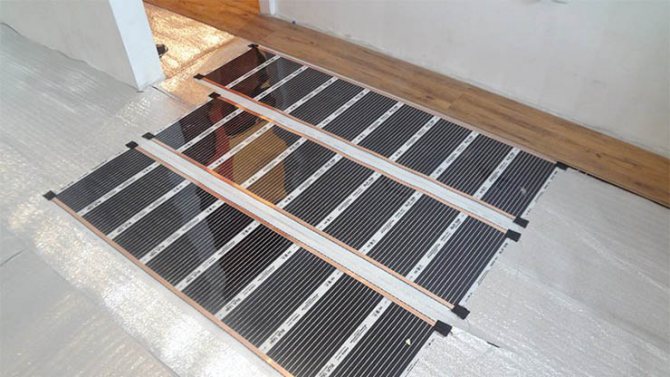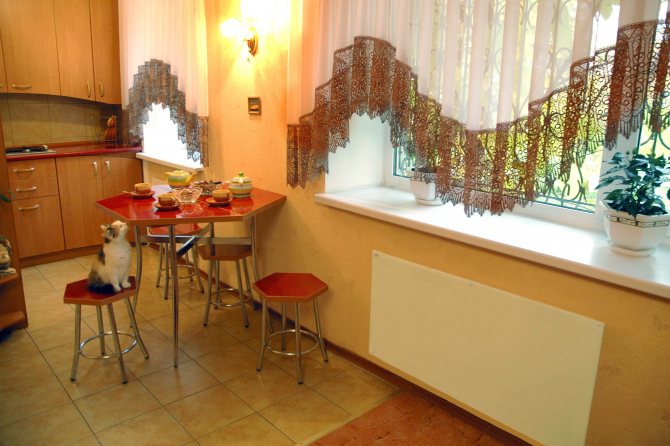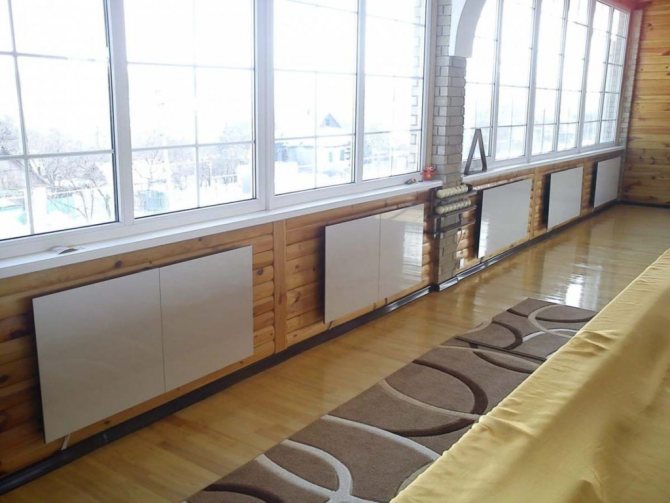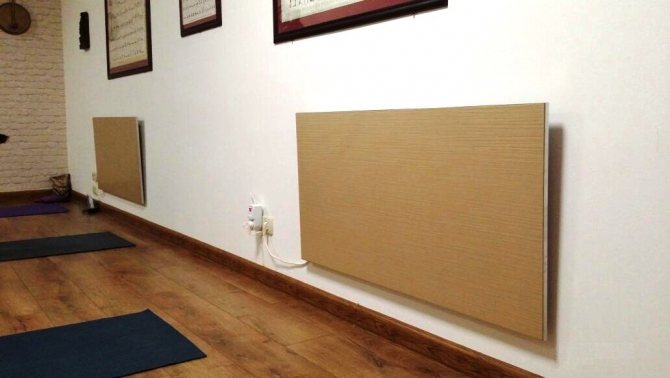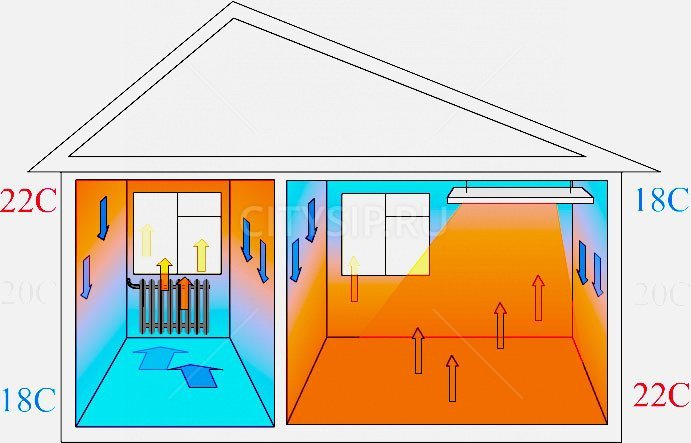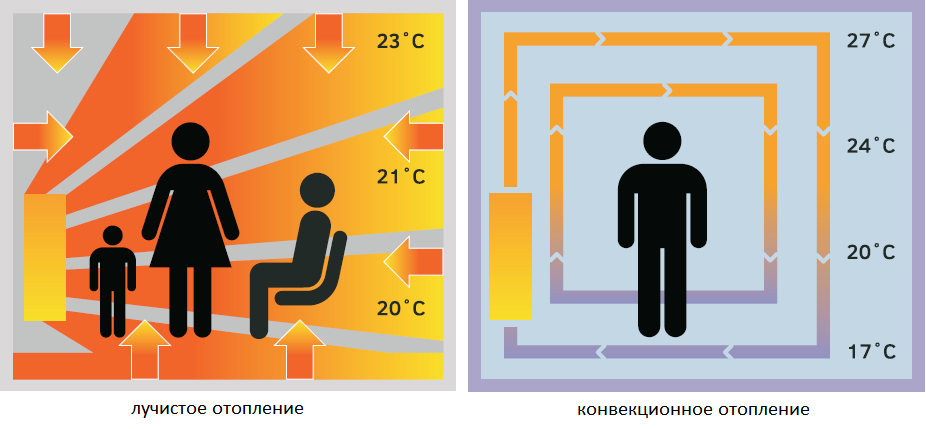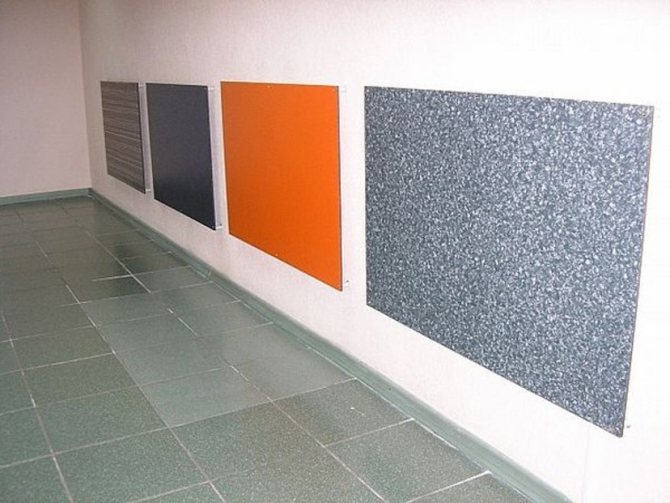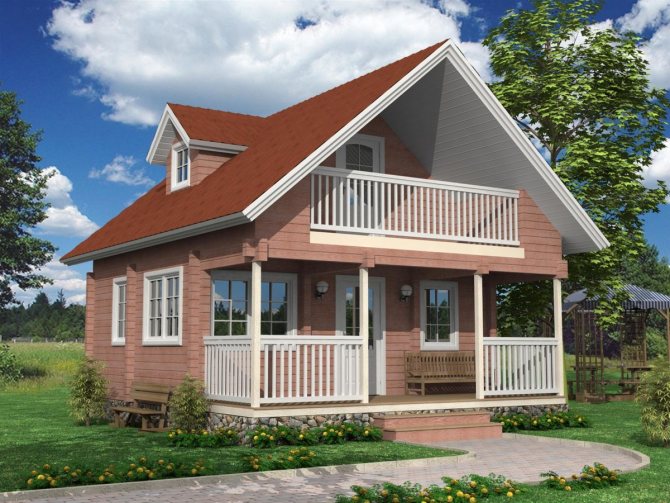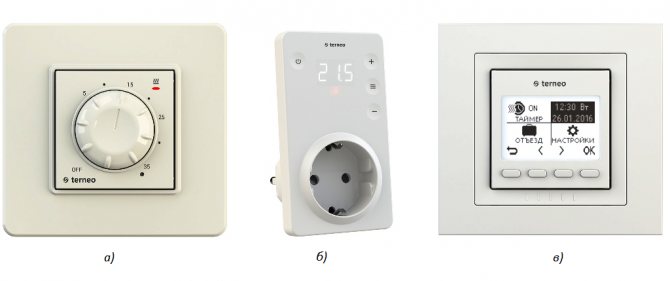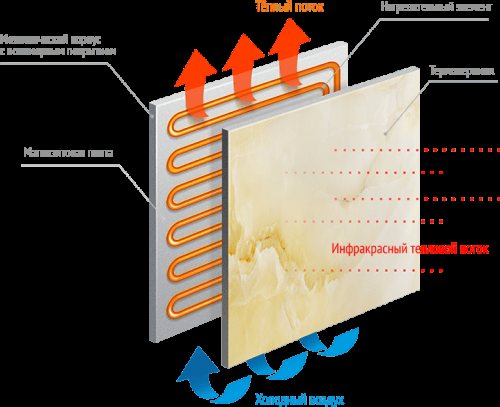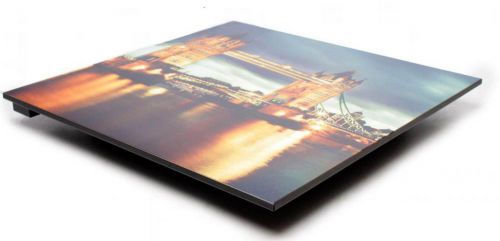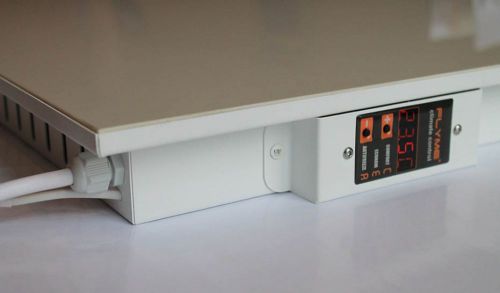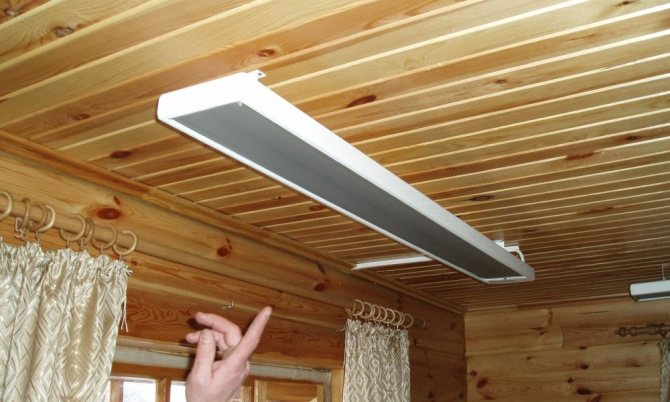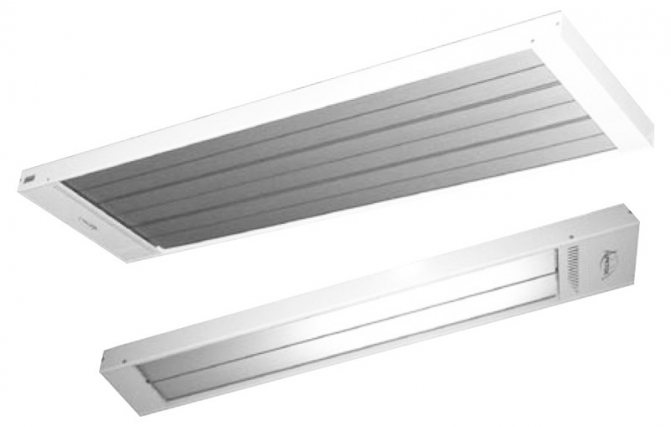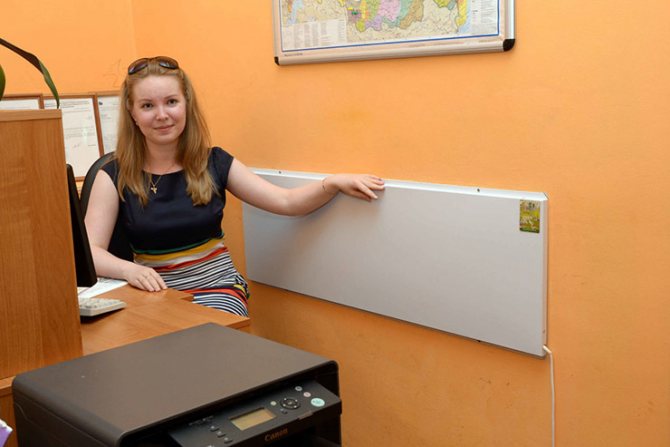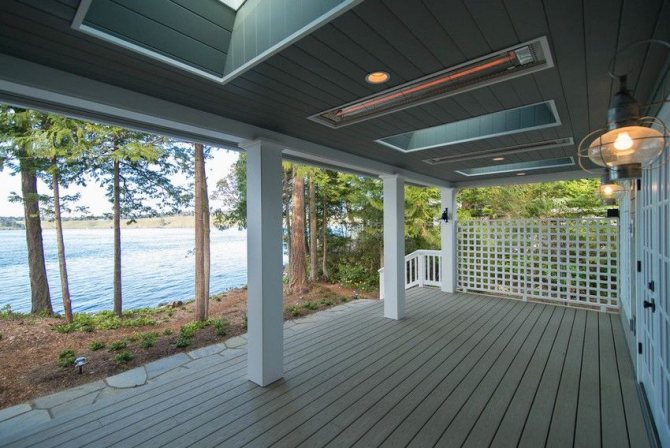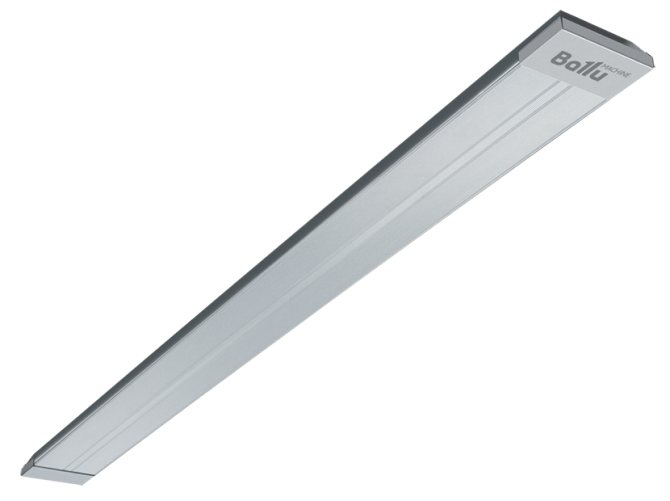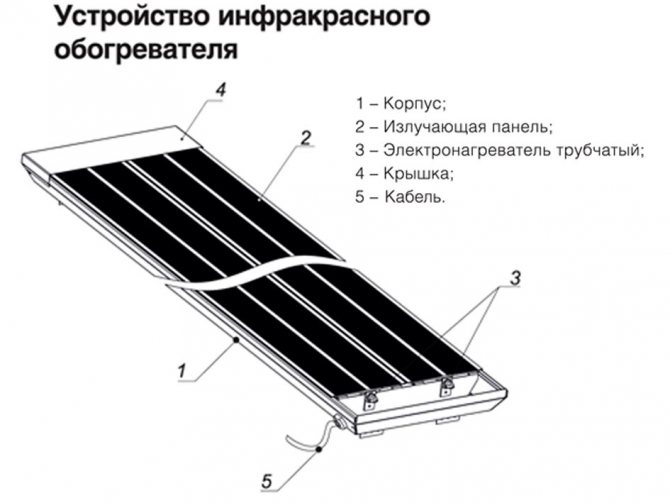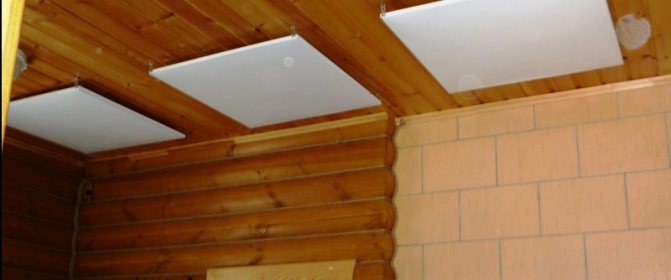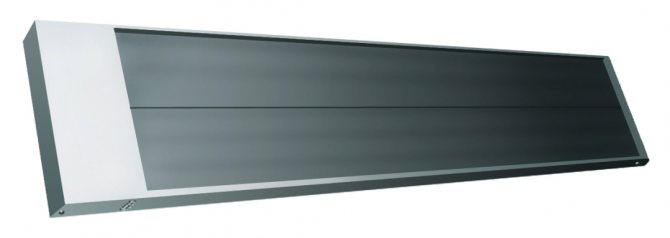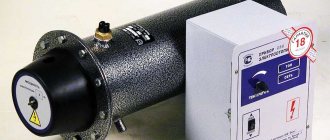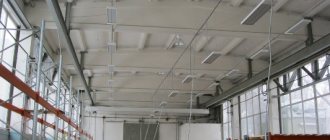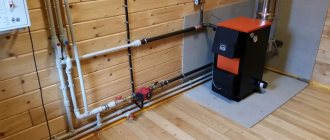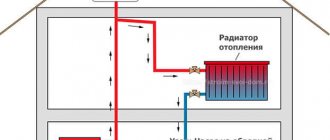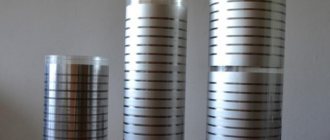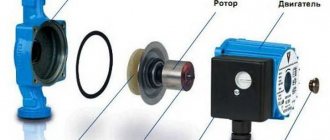How infrared panels work
It is no secret that the heated area is much larger than the surface of heating devices. The high speed of heating a room with infrared heating panels is explained by the fact that the energy emitted by them is much better absorbed by the surface of objects. If we compare with conventional heaters, then in this case the temperature in the room rises 4 times faster.
It has been noticed that furniture accumulates radiant heat especially well, which, after accumulating energy, itself turns into a source of heating. To avoid heat leakage outside, it is not recommended to direct the rays of infrared heating panels onto the surface of walls, ceilings, doors and windows. Another useful quality of devices of this type is that they do not burn out oxygen.
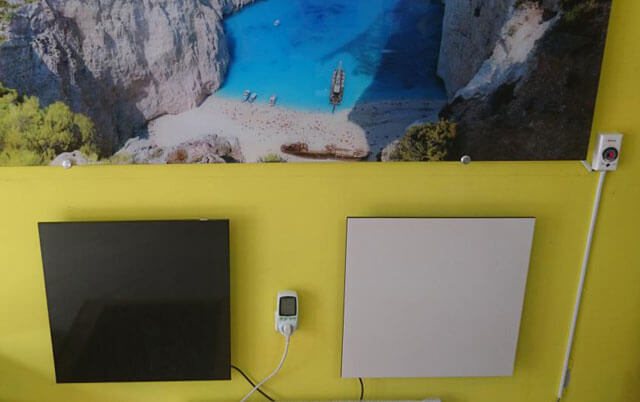
It is for this reason that they are used to maintain an optimal temperature in such rooms:
- Apartments.
- Private houses.
- Trading platforms.
- Factory halls with high ceilings.
- Warehouse premises.
- Open areas.
Ceramic panel heaters: how do they save on heating?
Residents of country houses are used to taking heating seriously. Multiple heating systems can be combined to make a long, cold winter comfortable. For example, in normal mode, use ordinary radiators, and during frosts, connect energy-saving infrared ceramic heaters. We will talk about them today.
Electric heaters are not very popular among Russians, mainly due to the high cost of operation. No matter how much the device itself costs, you will have to pay much more for electricity. But recently, heating devices have appeared on the market, which do not so noticeably "hit the pocket" of the user. These are infrared ceramic panels.
Infrared heaters as such today will surprise no one. They are economical and efficient, but they have a significant drawback. Devices of this kind cool down immediately after being turned off. What if you combine an infrared emitter with a material capable of storing heat?
Ceramic panel construction
This is the path taken by the creators of ceramic heating panels. Clay has served humanity for many thousands of years, and our ancestors cooked food in ceramic dishes for a reason. This material, firstly, withstands long heating without emitting toxic vapors, and secondly, it cools slowly.
So what exactly is a "clay" heater? In outline it is a flat metal panel with an electric cable laid on it, which, in fact, serves as a source of infrared energy. A ceramic plate is mounted on top of it, which accumulates heat.
Additionally, the devices are equipped with a fan. Its task is to forcibly supply cold air to the heating element and distribute heated air throughout the room. Thus, convection is added to radiant heating. The advantage of such a solution is an increase in the heating effect, a minus - additional noise, which can cause inconvenience, especially at night.
The working temperature of the front side of the ceramic panel is 75-80ºC, which minimizes the risk of burns from accidental touch
But back to the core technology. Infrared panels do not heat the air around them (like ordinary radiators), but the objects around them. This consumes much less electricity than is needed, for example, an oil heater. This means that the operation of infrared is relatively inexpensive.And if we take into account that even after switching off the ceramic panel continues to give off heat, the savings are quite tangible.
Here are some specific figures. The power of the ceramic panel ranges from 300 to 990 W, depending on the size. Compact models do not consume much more electricity than a regular office computer. And if you compare the costs of an infrared device with convectors and fan heaters, the savings reach 30% or more.
If it is a model with a thermostat, you can achieve even more impressive performance.
However, the cost of the device itself must be included in the heating costs. The range of prices is surprisingly large. As of December 2020, an infrared heating panel costs an average of 2,800 to 17,000 rubles. On the market you can also find models for 30,000 rubles, equipped with the latest technology, but they are not in high demand.
Ceramic panel with print
It is also worth paying attention to the design of heating devices. All ceramic infrared detectors have the appearance of a panel. The front side can be printed with a pattern or texture of any material, but for the user, its absolute smoothness is much more important. The fact is that all convective heaters, together with the air, drive dust around the room. On a perfectly flat surface, it does not linger, which means that taking care of the heater will not be laborious.
According to the type of installation, all ceramic heaters are divided into two types - floor-standing and wall-mounted. In the first case, the device is fixed using the supplied brackets, in the second, it is installed on legs or wheels.
If the heater is to be operated as a floor-standing heater, it must be equipped with an option to switch off in the event of a rollover.
Additional options
Ceramic panel with thermostat
Like most modern appliances, ceramic heaters have many improvements. The first and most important thing is a thermostat that allows you to change the heating temperature in manual or automatic mode.
Another important function is protection against voltage surges. It will protect the device from sudden power surges that occur both in apartments and in country houses.
The fan control function reduces energy consumption. In cold weather, you can run the fan to maximum, and when it gets warmer, slow it down or stop it altogether. By the way, in some models there is a blowing mode without heating, thanks to which the heater turns into a device that gives coolness.
A dust filter is usually installed on the air ducts of the fan. It is designed for a long service life without replacement. It only needs to be removed from time to time, rinsed and returned to its place.
Most modern heaters are equipped with air purifying and ionizing lamps. It is worth noting that the effectiveness of such devices is controversial, but many find them useful.
Power calculation
Before buying heaters for your home, you need to decide on their number. This can be done using a simplified formula. If infrared ceramic panels will serve as additional heat sources, you need about 25 W per 1 m². If the main ones are 50 W per 1 m².
But these are very approximate figures. Accurate calculations are made based on the height of ceilings, wall thickness, tightness of windows, etc. It is necessary to take into account all the factors affecting heat loss, and it is advisable to invite specialists for this. Their services will have to be paid, but in the end, these costs will pay off.
It is also important not to be mistaken with the location. Heaters are usually installed under windows so that cold air does not draw from there. Mounting in corners and niches is worth avoiding, as poor air circulation reduces the efficiency of the device.
The projected lifespan of the ceramic infrared heater is 30 years
The advantages of such heating
Compared to conventional heating systems and domestic heaters, infrared heating panels offer a number of advantages:
- The temperature in the heated room can be raised up to +50 degrees.
- The ability to maintain a comfortable temperature and humidity regime.
- During the operation of electric thermal panels, convection air currents that raise dust are not generated.
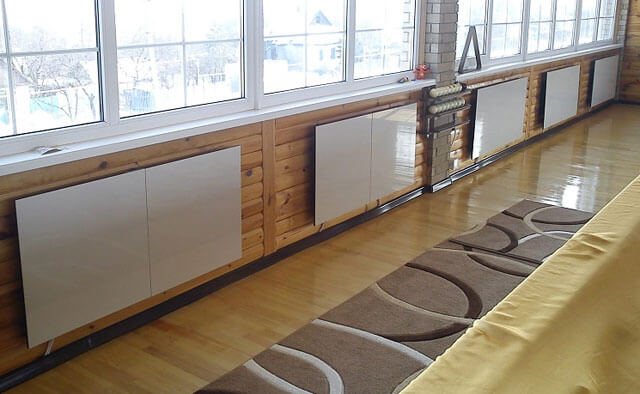

Devices of this type can perform not only the role of auxiliary heating, complementing traditional radiators. They are often used as the main heating devices. To determine the most suitable heating mode for a dwelling, the initially installed heating system, the materials used to build the house, the features of the climatic zone, etc. are taken into account.
When choosing the optimal model of infrared heating panels, it is recommended to consider the following points:
- The device is usually equipped with a special thermostat, which makes it easier to maintain an optimal temperature regime and the level of electrical energy consumption.
- The difference between the air temperature near the ceiling and the floor is reduced to a minimum.
- Such heating does not require bulky piping, radiators and boilers.
- The infrared heating panel can be installed anywhere (wall, ceiling) without any loss of efficiency.
- From above, the heater allows laying tiles, installing plasterboard structures and gluing wallpaper.
- These devices can be used for 50 years or more, in a regime of increased fire and environmental safety.
Benefits of panel heating systems
Heating by panel devices has a number of advantages, among which it is possible to highlight the following points:
- The heat from the devices is evenly distributed throughout the entire space of the room.
- Energy saving, due to which the price of heating equipment quickly pays off.
- Saves space as there is no need for piping and radiators.
- Aesthetics - radiators, in most cases, spoil the appearance of the room, while the panels are not so noticeable and look more attractive. That is why panel devices fit well into any interior design.
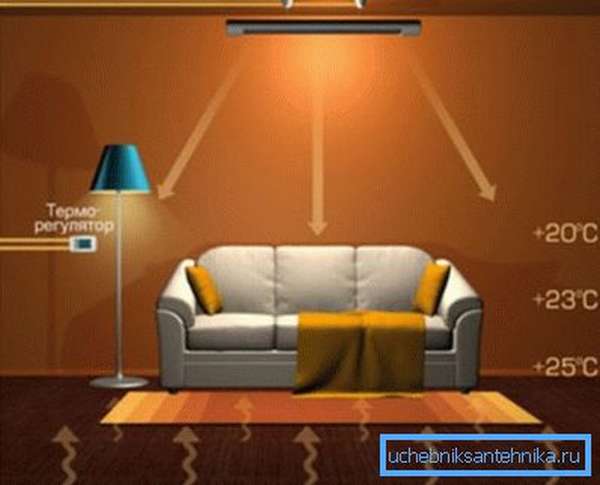

- Prevents the origin of the result of cold walls, as with classic types of heating.
- Allow to provide local heating, for example, such a "warm rug" can be placed near a computer desk.
- Electrical panels for heating are easy to install yourself.
Advice! When choosing a decorative design for panel heaters, focus on the color of the floor. In this case, electric heating panels will look harmonious.
For these reasons, the "warm floor" systems and electric heating panels are widely used not only in apartments and buildings, but also in office premises.
These are, in fact, all the main highlights of the panel heating.
What are infrared heating panels?
All products of this type are divided into two large groups:
- Hinged... Most often they are equipped with a colored metal case heated by means of an infrared emitter. The device is powered by an ordinary socket. Both a separate and a mounted type of installation are used.
- Built-in... The basis of such a panel is a gypsum board covered with a layer of insulation. The infrared emitter located on top is made in the form of a carbon conductive wire protected by a polymer sheath. The panel is powered by a standard 220 V.
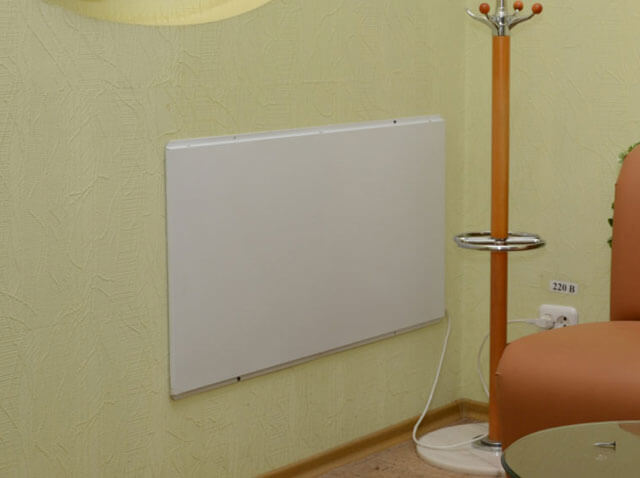

As for designer wall heating panels, they can be of different colors and sizes, and usually stand out in a separate line. A slab in the form of a plinth looks very original: it can be used to decorate the perimeter of a heated room. When decorating walls with plasterboard, wall heating can act as the main one. In those dwellings where a source of main heating is already available (solid or liquid fuel boiler), heating panels play a secondary role.
It should also be said about the weaknesses of these devices:
- Although the sensation of warmth from the rays comes almost instantly, infrared devices operate mainly locally: one part of the room will be heated, and the other will not.
- Due to the uneven effect of heat on the human body, he may experience health problems - headaches, fatigue, chills.
- Since the operation of the IR panel does not heat up the air, but the surrounding objects, a plastic smell may appear in the room due to the heating of the plastic surfaces.
- Despite the high power of such heaters (about 1.2 kW), their range of action is usually limited to a space of 8 m2.
- Infrared radiation has a negative effect on the eyes.
Electrical
Currently, radiant heating is gaining more and more popularity - it is an improved heat distribution scheme. If a classic radiator heats air, the heat of which is transferred to surrounding objects, then infrared ceramic panels give off heat to objects that transfer it further.
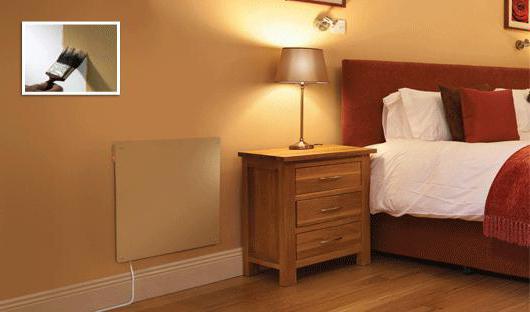

In most cases, the following heating devices are used:
- STEP panels are one of the most economical types of heating devices. Their body is made of a galvanized metal box, inside which there is a reflective heat-insulating layer and a powerful heating element. Radiation from the device heats up objects in the room. It can be used in rooms for any purpose, as it is completely safe.
- Ceramic panels combining infrared heater and convector. The front panel is made of glass ceramics, with low energy consumption, the heating element has a high heat transfer coefficient. On the back side, there is a heat-accumulating coating that ensures natural convection.
- EINT panels are infrared long-wave heaters. There are wall, floor and ceiling panels and can be installed in private homes, apartments and offices. They are safe and reliable, do not pose a fire hazard and do not dry the air.
Recommendations for the use of infrared heating films
The main feature of such heating is the absence of energy losses for transportation from the source to the radiating surface. This film can be applied to any surface including floors, walls or ceilings. In the latter case, it occupies about 2/3 of the total area, which makes it possible to achieve good heating uniformity. If you wish, you can additionally decorate the film. It is important to remember that it is prohibited to combine panel heaters with a stretch fabric or PVC ceiling. It is recommended to build a plasterboard platform on top of the device. When using decorative finishes, metal elements should be avoided.
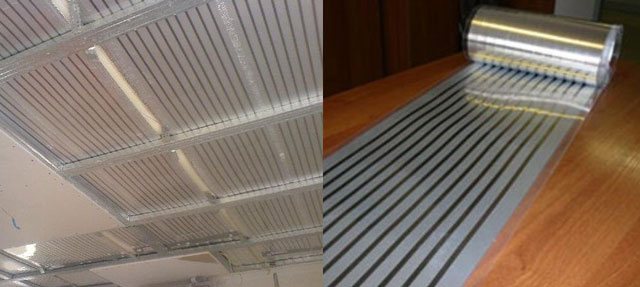

The main advantages of heating films are:
- Lack of communication wiring.
- The infrared panel heater is powered from the household network, without the need for an additional boiler and piping.
- The system will not freeze if it is idle at sub-zero temperatures.
- The heating foil is very mobile: it can be removed at any time and attached elsewhere.
- The operation of such a system is very simple, and special service is not required here.
- The operation of the film is not accompanied by noise and combustion products.
- The circuit tolerates voltage drops well.
- If all the rules are observed, infrared film can work for at least 20 years.
The disadvantages of film heating are usually associated with significant energy consumption, so it cannot be called economical.
What other types of infrared heating are there?
Ceiling infrared panels do not take up much space. They can be used in rooms over three meters high. They are distinguished by their quiet operation, environmental safety and the ability to organize heating of a certain area. Space heating panels are easy to install and operate. Some manufacturers of cassette ceilings complete their products with special heaters.
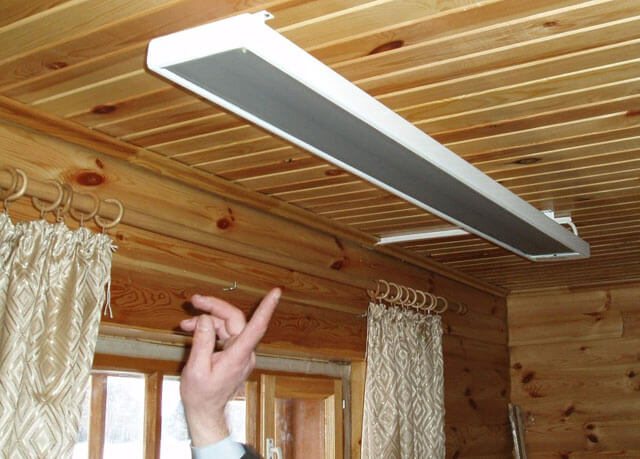

In addition to the significant consumption of electrical energy, ceiling heating panels have another drawback: they are not always able to maintain the overall aesthetics of the room. When it comes to wall mounted infrared heating panels, they are a good replacement for traditional batteries. Due to its small thickness and light weight, the installation of such heating can be carried out independently.
Optimal installation site for electrical heating devices
Personal preference is critical in this regard. There is no consensus on this issue: some people like the wall mount of infrared panels for heating, others - floor or ceiling. Considering that warm air always rises upward, wall mounting is not as effective. If the heating panels are placed on the floor, the air heated with their help will evenly heat the entire room, gradually rising to the ceiling. Approximately the same scheme of action for ceiling heating panels: in this case, it all depends on the convenience of the location.


